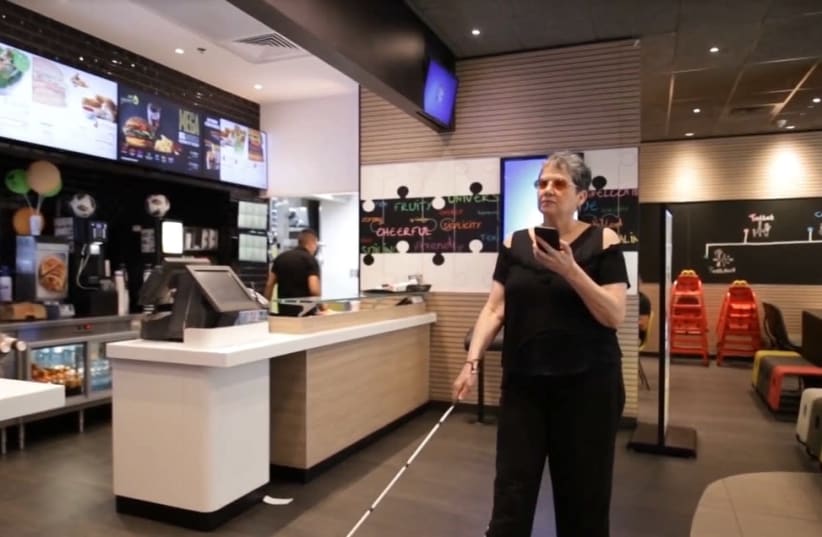When McDonald’s went live with this project in cooperation with the voice navigation app RightHear, it became the first chain in Israel and the world to be fully accessible for the visually impaired.
There are approximately 200,000 blind people in Israel today. McDonald’s is the country’s largest food chain.
“McDonald’s Israel deployed RightHear beacons in all of its restaurants to turn them into more accessible environments for people who are blind, low vision or with other orientation challenges,” founder Idan Meir explained on his company’s website.
RightHear is an advanced spatial orientation solution for people who are blind or visually impaired. The company installs tiny, self-powered sensors near entrances, restrooms, elevators and other key locations. These sensors use Bluetooth technology to communicate with the user via the Right Hear smartphone app. The app provides general information about the location in which the individual is located.
For example, “Welcome to McDonald’s. You are next to the entrance door.”
The company launched in March 2016. Since then, more than 800 venues have turned their public spaces into accessible environments for people with low-vision or orientation challenges through RightHear’s solution. In Israel, RightHear is installed in Habima Theater in Tel Aviv, Azrieli shopping malls and Assuta medical centers, among other locations.
“When we started RightHear three years ago, we were mostly thinking about turning large, complex spaces into accessible environments for our users,” Meir explained in his post. “We were thinking about large hotels, shopping malls, airports. We thought the bigger the indoor space, the more difficult it would be to find your way inside of it for the blind or visually impaired users of ours.
“The Truth is that it doesn't really matter what is the size of the space, the difficulty to orient indoors for a blind or visually impaired person in a large or small environment remains the same,” he continued.
Meir said that he and his team were “amazed” by McDonald’s executives ability to get down to the smallest details of this project. And, he said he believes the restaurant chain did it not for the publicity, but to have social impact. It was almost one year from the time that the 180 chains completed deployment of the system until anything was written about it.
“This collaboration with you is not about the press or the marketing effect it will create for us,” one McDonald’s vice president told Meir, “but about the core social impact it makes for an audience we truly care about.”

